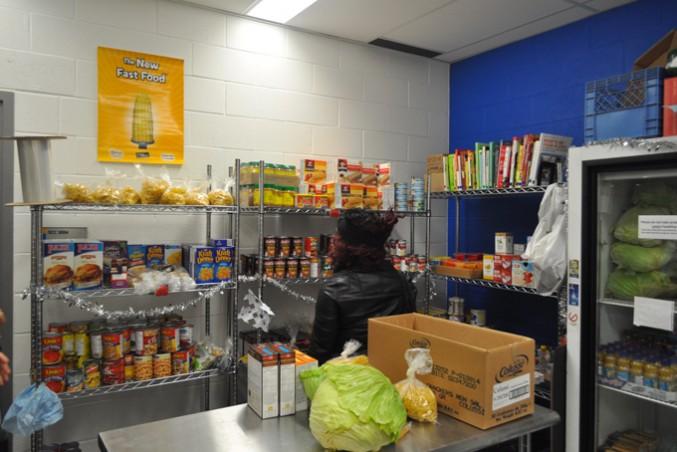By Devin Jones
A report on students’ increasing food insecurity, jointly conducted by the Ryerson Students’ Union (RSU) and members of the Good Food Centre (GFC), was released Feb. 26.
Calling it The Hunger Report, Anthony Nguyen, Danielle Labonte and Drew Silverthorn compiled the report with the hopes of raising awareness of the growing number of students relying on the GFC, Ryerson’s emergency food relief centre, in an effort to better understand students’ food insecurity.
“It’s a chance for students to get more involved and learn about food insecurity at systemic level. Not only does it get the centre more donations and raise awareness about it, its also a massive proposal for changes,” said volunteer Alison Townsley.
The report has found that 52 per cent of those using the centre are female, higher than both the provincial and national average at 45.3 and 48.1 per cent.
“We have quite a few single mothers that use this service, as well as women from economically marginalized and women from racialized backgrounds, so it’s not just the university community,” said Drew Silverthorn, a contributing member of the report.
The report has also found 92 per cent of those using the centre are full-time students.
The engineering and architectural science program has the largest percentage of students using the centre. With the program currently paying the highest tuition costs at $9,421 – $10,198, it’s no stretch to find the correlation between the two.
The GFC has provided food relief to the Ryerson community for the last 20 years. Now a funded service under the umbrella of the RSU, it’s come a long way since its grassroots beginning. With a newly renovated space and an emphasis on quality food procurement, the GFC is also looking to tackle some of the social justice and sustainability issues that are connected with food insecurity. Ryerson community members are able to get a three-day supply of non-perishable food items and fresh produce once a week.
“It would be good to have enough money to constantly have bulk items like milk, sugar and flour,” said Townsley. “I wish we had enough money to stock like this in a similar way to a grocery store. Eleven per cent of the students who use this service are on a vegan or vegetarian diet, it would be great to have more options for them.”
The report has scrutinized student loans as well, stating that the allowances for rent given out by OSAP are $552, while the average rent of a two-bedroom apartment split by two people is $724. The report adds in food, transportation and miscellaneous expenses and ultimately projects a shortfall of $1,360 for men and $1300 for women between actual cost and OSAP allowances per year. It has also found that 44.7 per cent of members using the centre are renting or own an apartment or house by themselves.
At the end of the report the GFC suggests that at a university level tuition should be frozen, annual funding should be allocated for the centre and its services, as well as unpaid co-ops, internships and placements reworked. At a government level, the GFC suggests financial aid should be calculated in consideration of the poverty line and that student loans should be calculated by the city, not by the province.










Leave a Reply